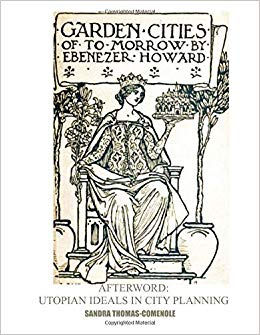History of Planning: Do we need to know it?
- Zehra Wazir

- Nov 12, 2019
- 2 min read
"Planning for the future without a sense of history is like planting cut flowers " - Daniel J. Boorstein.

the clock is ticking...
Time is not statistic; never stops and neither awaits anyone. The impacts of past, needs of present and visions of future are inherent part of community planning process; to understand, solve problems and achieved desired form of built and natural environment. Planning is a recurrent phenomenon existing from the start of civilizations enabling Egyptian civilization to exist for 3000 years, Alexander; the great to conquer lands, Mohenjo-Daro for sophisticated infrastructure, Greeks for agora and democracy to Romans for military power and innovations in engineering. Therefore, the question as to the need of planning becomes obsolete; but striving for the better methods of doing it is the consistent effort in today time.
As the constituent words itself implies, community is at the heart of planning with motto “by the people and for the people”. As the cities and town are changing; due to growth and development resulting from new economic trends, technology, change in attitudes, globalization, cultural diversity; people are increasingly interested to shape the community where they live, work and play. In 21st century, planning has become complex due to high population growth, climate change, urbanization and competition for limited resources giving rise to actual and anticipated problems within community. In such scenario, the diverse interest of various people/groups need to be reconciled for public good such that solutions to the problems are socially and politically acceptable. This collaborative process of consensus building needs to ensure inclusive approach to reach common interest and support planning efforts. In my minuscule experience of project management for architecture work; finding common ground between clients, contractors and architect was tactful endeavor; therefore understanding multiplicity of planning approach is a must.
In co- dependent world; the over spill effects are evident from the time of industrial revolution in 19th century impacting the 20th century planning response to 21st century climate change impacting every country in world to eventual concentrated effort by all. Planners’ needs to anticipate the externalities accompanying the solution, using analytical and critical thinking along with; empathetic approach to various perspectives presented. The challenge in the planning field has been to combine the ideals of desired form by community with the pragmatic approach as the case history of various visionaries of 19th and 20th century shows; Ebenezer Howard for garden city concept leading to dormitory suburbs, Frank Lloyd wright for broad acre city, Le Corbusier high towers in park to monumental planning on Vitruvian principles.
The learning curve for a Planner is a never ending endeavor as evident from the response to the poverty, disease, congestion and squalors of 19th century industrial revolution till today. Various solutions have been implemented over time from rental barracks in Germany, tenement housing in Britain, regulatory act of 1901 in New York, civil society organization efforts by Jane Addams, founding of Planning Institute and urban reform movement in Canada. The nature of these multiple acts are diverse yet they cater to similar efforts; thereby understanding that planning is a multi-input endeavor in various aspects to bring about amenable solutions for present and future






Comments